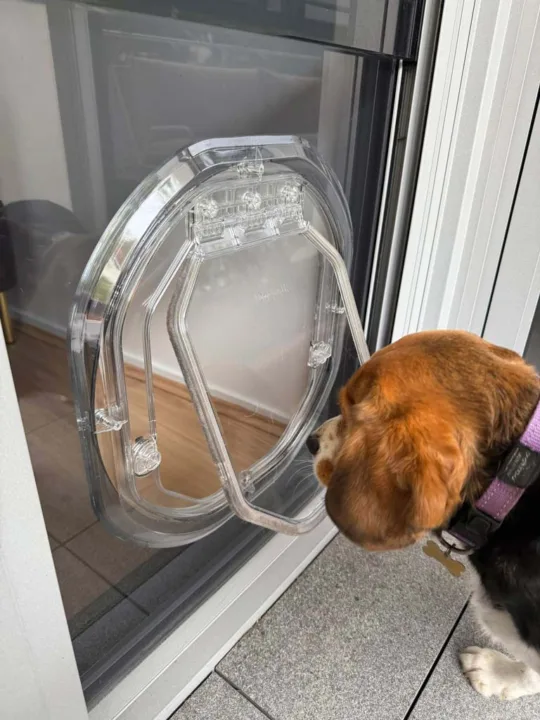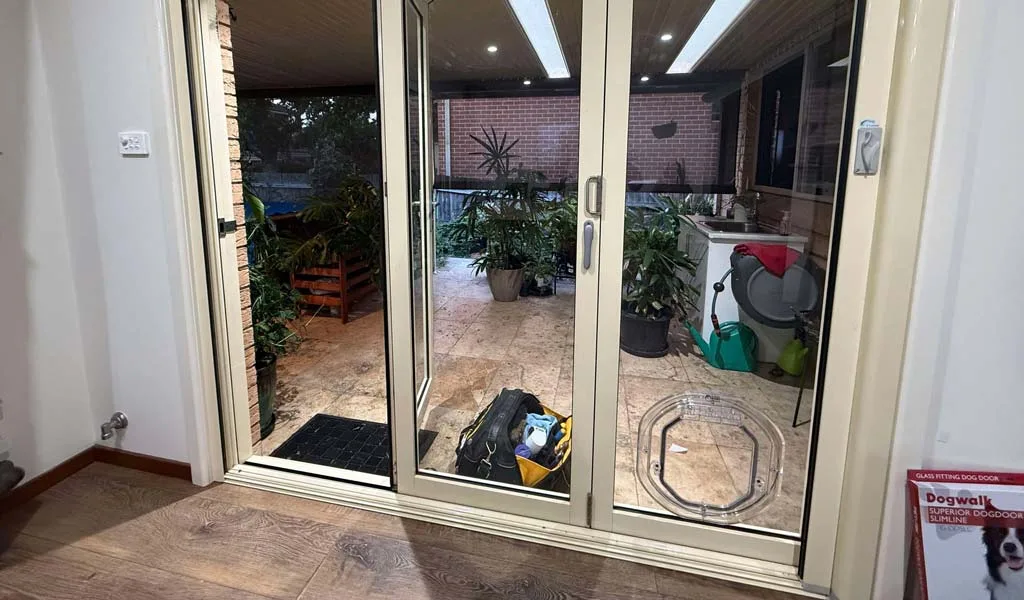Separation anxiety is one of the most common, and often misunderstood behavioural challenges dog owners face. It’s distressing for both the pet and the person: you leave the house, and behind you is a dog that howls, scratches, paces, or worse. You return to shredded cushions, scratched doors, or a dog so emotionally wound up that it takes hours to settle.
There’s no one-size-fits-all fix. But when it comes to managing and reducing separation anxiety, small environmental changes can have a big impact. One of the most overlooked tools in this process? A properly installed pet door.
In this article, we’ll explore how dog doors and cat doors — when paired with a thoughtful routine and calm leadership — can support pets struggling with separation-related behaviours.
Understanding Separation Anxiety in Pets
Separation anxiety isn’t “bad behaviour.” It’s fear-based stress triggered by the absence of a key attachment figure — usually you.
Common symptoms include:
- Vocalising (howling, barking, whining)
- Destructive chewing or scratching (often near exits)
- Pacing, drooling, or panting
- Attempts to escape (digging or biting doors/windows)
- Toilet accidents despite being trained
It’s not about disobedience — it’s about discomfort. Your pet feels trapped, unsure, or unsafe when left alone.
So… Can a Pet Door Really Help?

Yes — when used correctly, a dog door or cat door can significantly reduce the intensity of separation-related stress. While it won’t “cure” anxiety on its own, it plays a powerful role in calming the environment and giving your pet more control.
Here’s how:
1. It Reduces Feelings of Confinement
Many pets associate closed doors with being trapped. If your dog is left in a room, apartment, or small backyard with no way to move or change their environment, stress builds fast. A dog door changes that dynamic completely.
Your pet can:
- Choose when to go outside or come back in
- Respond naturally to external noises (then disengage)
- Avoid pacing or panic by self-soothing through movement
Dogs and cats often calm down more quickly when they feel in control of their space.
✅ We install dog doors for glass, timber, and screens — all designed to suit modern homes without compromising on style or safety.
2. It Helps Break the Association With “The Exit”
One core driver of separation anxiety is the exit trigger — when your dog sees you grab your keys or close the door, it sparks panic. That specific door becomes a visual and sensory cue that you’re leaving.
By adding a microchip pet door, you change how your pet relates to entry and exit points.
It’s no longer a one-way separation zone — it becomes just another neutral part of their territory. Over time, this reframing can reduce emotional loading around entrances and exits.
3. It Encourages Independent Decision-Making
Independence isn’t just a training goal — it’s emotional conditioning.
A pet door allows your dog or cat to:
- Move freely without needing constant access from you
- Make small decisions on their own (“I’ll step outside for a bit”)
- Gain confidence that the world is still there, even when you’re not
Over time, this autonomy helps reduce the panic loop of “I’m alone and I don’t know what to do.”
✨ Our pet door training teaches dogs how to confidently use their door — no stress, no confusion, just calm transitions.
4. It Provides Access to Self-Soothing Environments
Some dogs and cats self-soothe by lying in the sun, sniffing the garden, watching birds, or stretching on a cool patio.
Without access to those outlets, they may:
- Pace inside restlessly
- Obsess over the door
- React more intensely to your absence
A pet door gives them that outlet. Even short outdoor visits or a few quiet minutes outside can dramatically shift their emotional state.
For apartment dwellers, we also offer a dog door for sliding glass door that give access to balconies or enclosed outdoor spaces — perfect for safe independence in high-density settings.
When a Pet Door Doesn’t Help (Yet)
If your pet’s anxiety is severe, a pet door on its own won’t be enough. Dogs that experience full-blown panic attacks, destructive meltdowns, or escape attempts when left alone may need:
- Gradual desensitisation training
- Calm departures and arrivals (no big goodbyes)
- Assistance from a certified trainer or vet
But even in those cases, a dog door becomes part of the bigger picture — a way to shift the environment and reduce one of the main stress triggers: confinement.
How We Approach Pet Door Installation for Anxious Pets
We’ve worked with hundreds of dogs who showed signs of anxiety, restlessness, or door-based frustration. Our approach is simple and effective:
- We consult with you about your dog’s triggers and behaviors
- We recommend door types that suit both the property and the pet
- We install cleanly and professionally, minimising disruptions
- We offer training support so your pet learns to use the door calmly and confidently
Because it’s not just about the product — it’s about the outcome.
🛠️ Explore our dog door options →
🎓 Learn about our 100% success-guaranteed training →
A Pet Door Isn’t Just an Exit — It’s Emotional Support
We don’t often think of access as emotional health, but for dogs and cats, it can be. A pet door restores control, movement, and decision-making — all things that help balance anxiety.
When used as part of a structured daily routine, pet doors:
- Reduce door-related stress
- Shorten recovery time after you leave
- Encourage emotional independence
- Create a calmer home overall
Final Thought: Freedom is Calming
Giving your pet more freedom doesn’t mean less structure. It means healthy structure — with built-in flexibility, predictability, and choice.
If your dog or cat struggles with anxiety when you’re not home, a dog or cat door could be the quiet shift that changes everything.
✨ Contact us today to learn more about our pet doors and training solutions for anxious pets — and let’s help your furry friend feel calmer, more confident, and in control.


